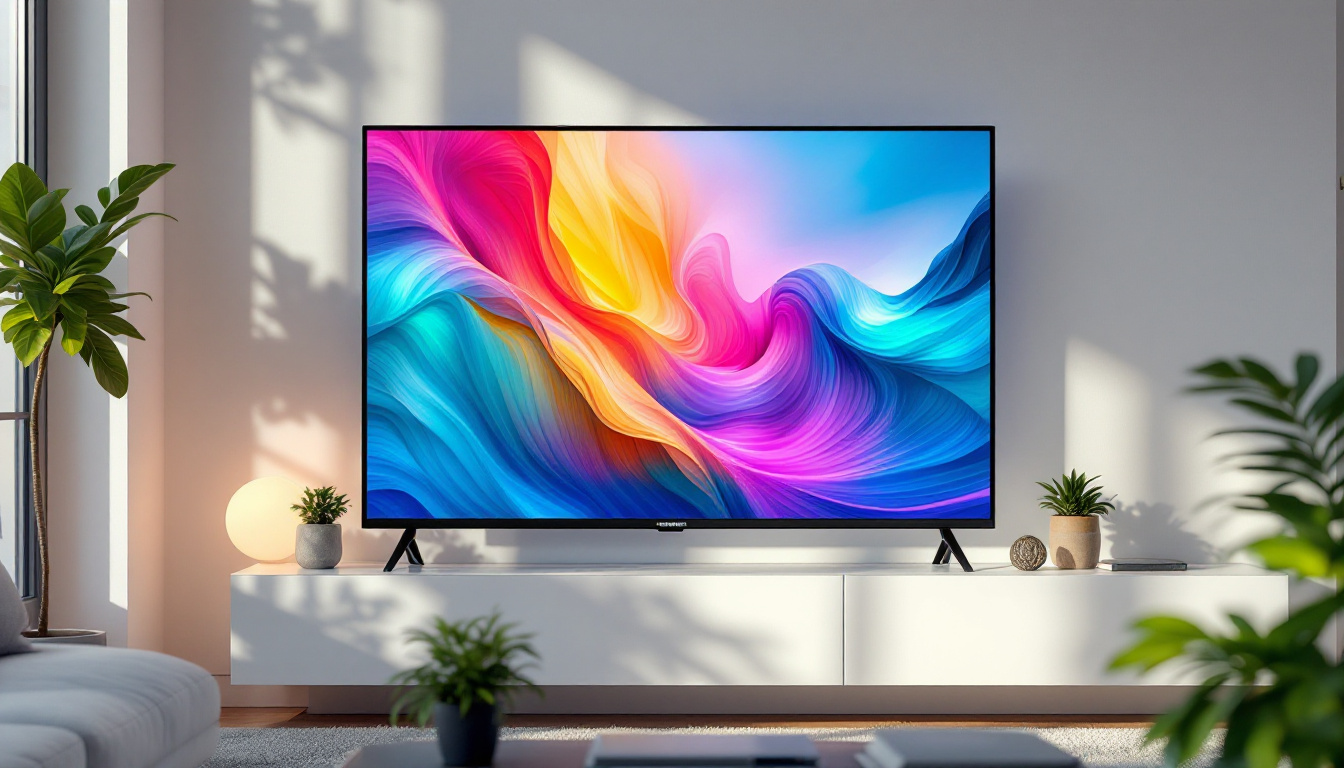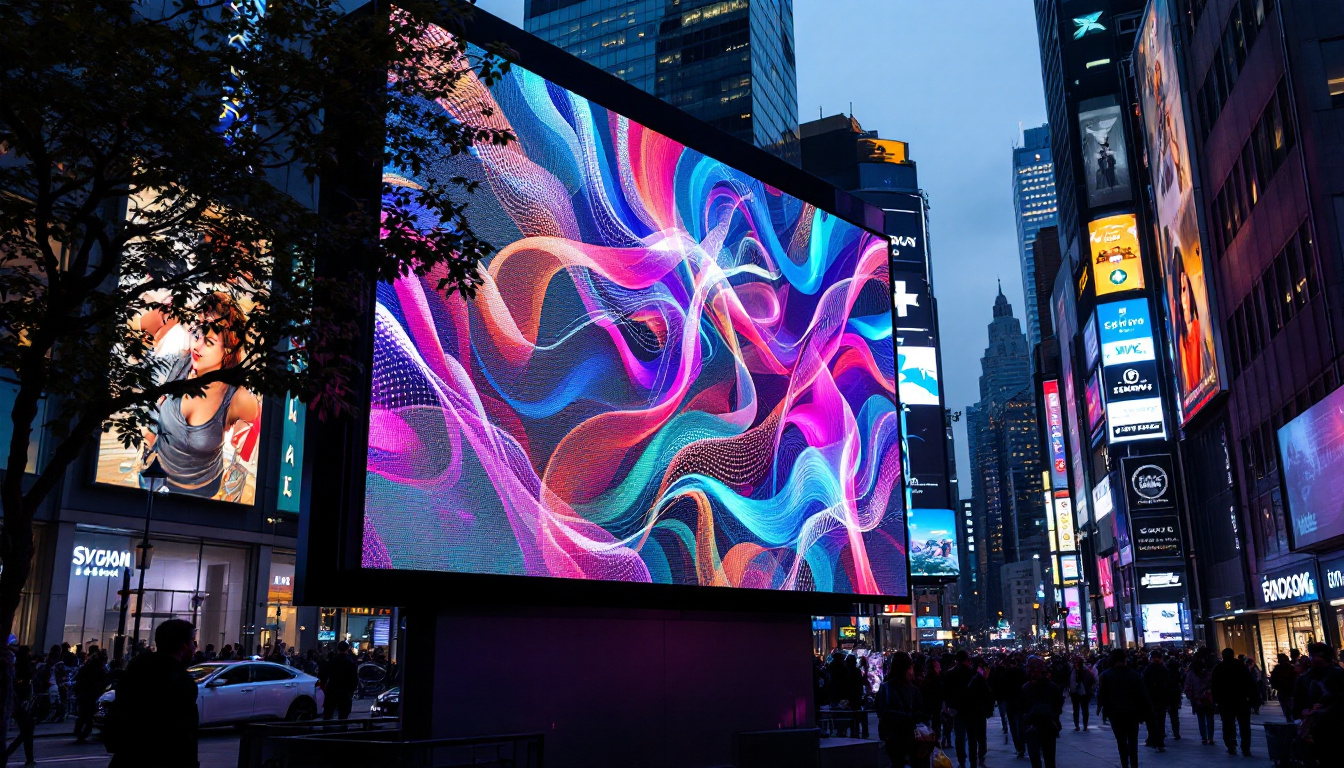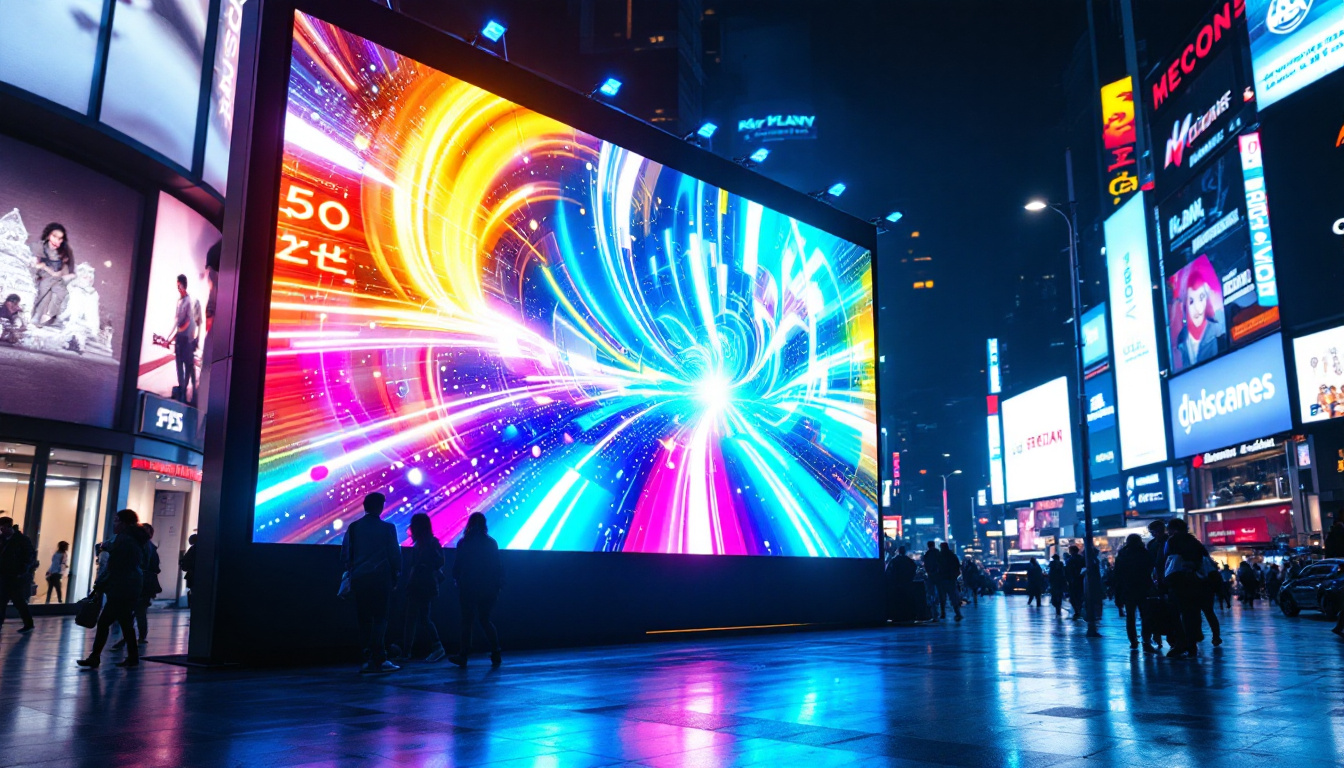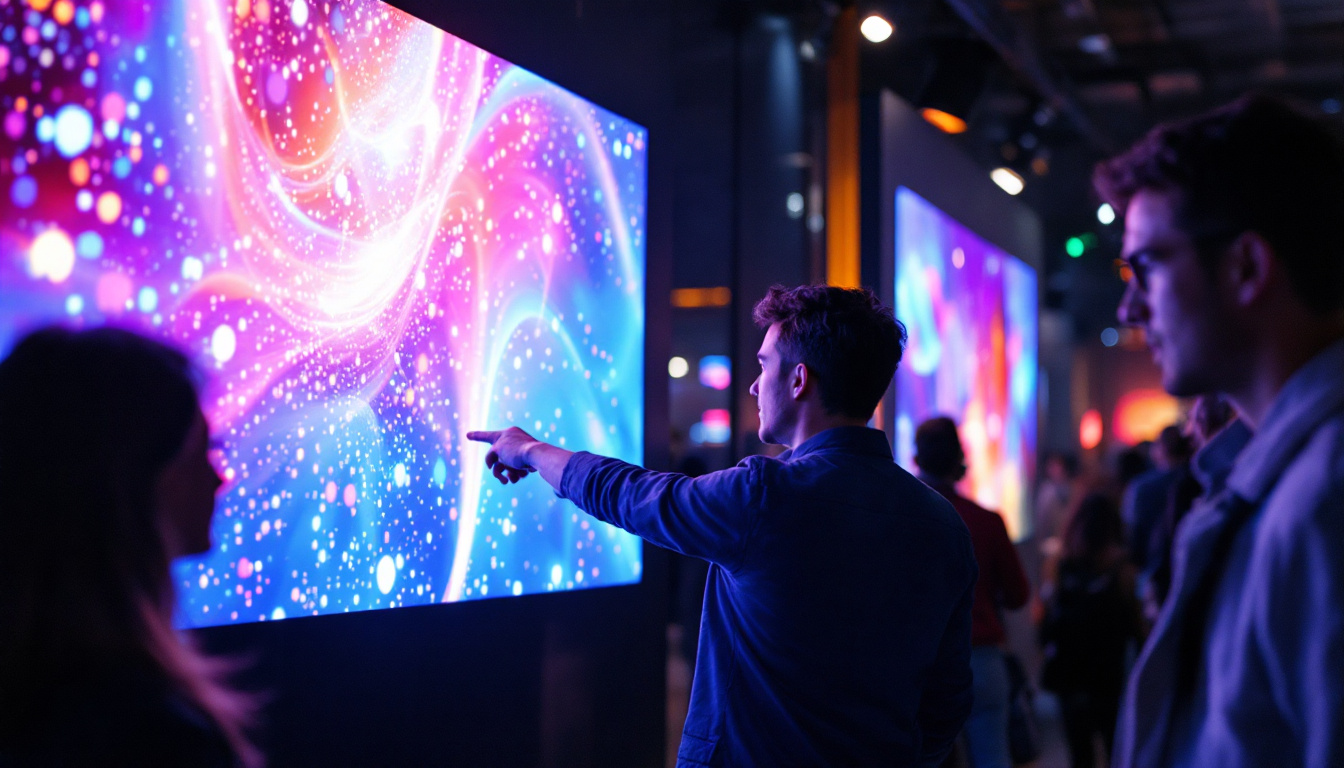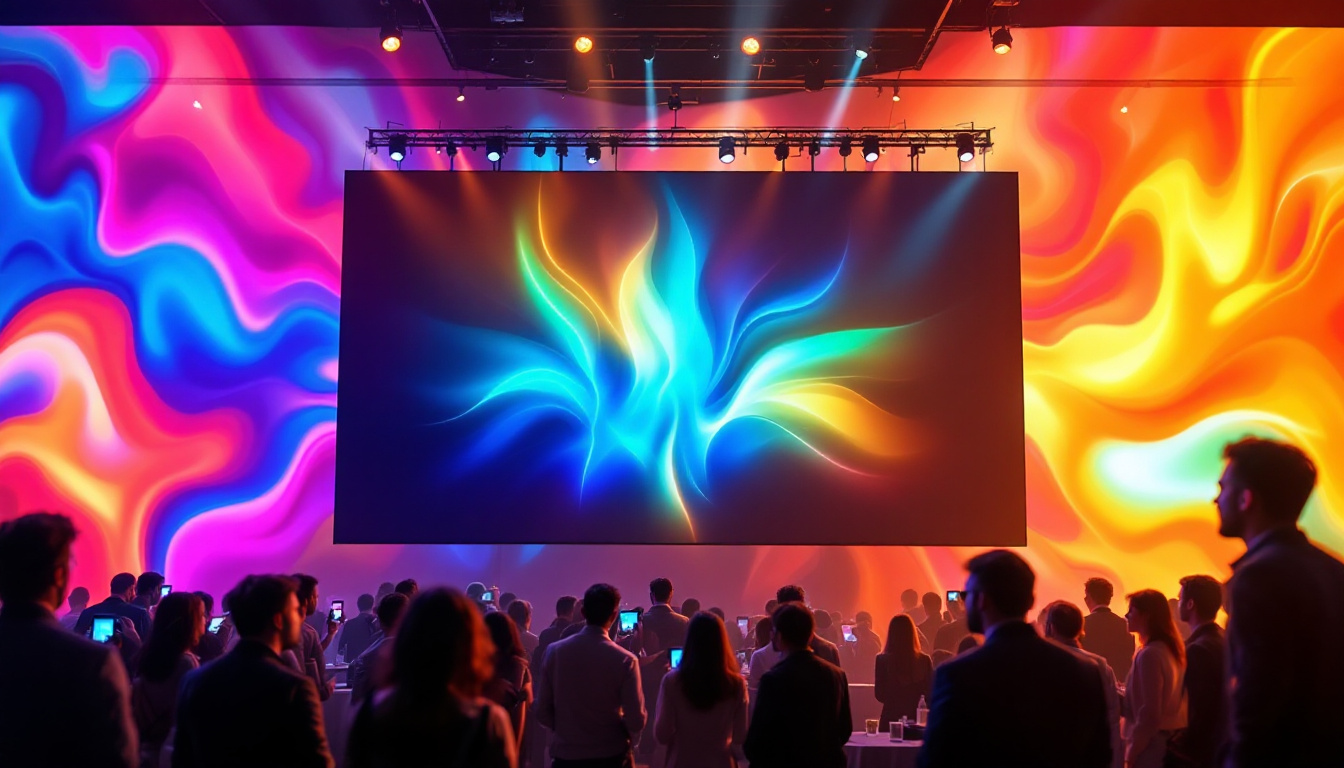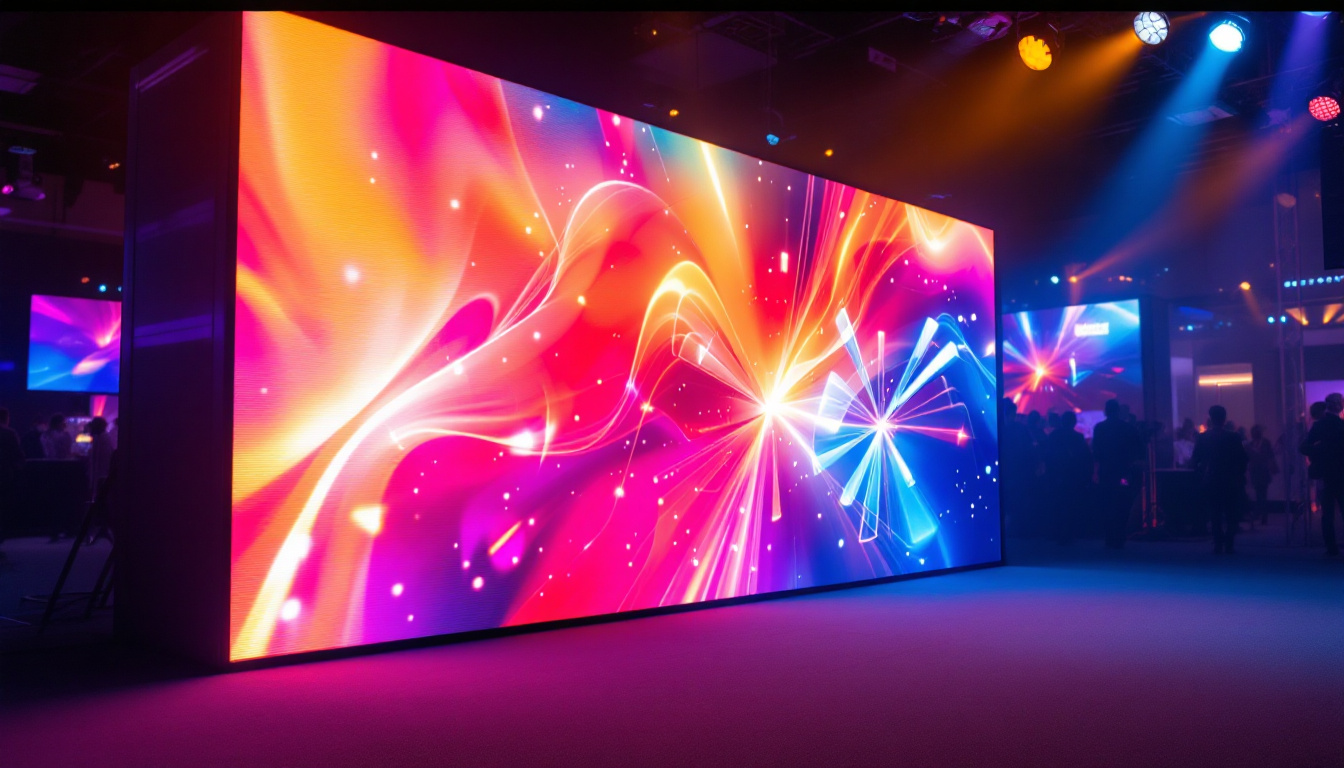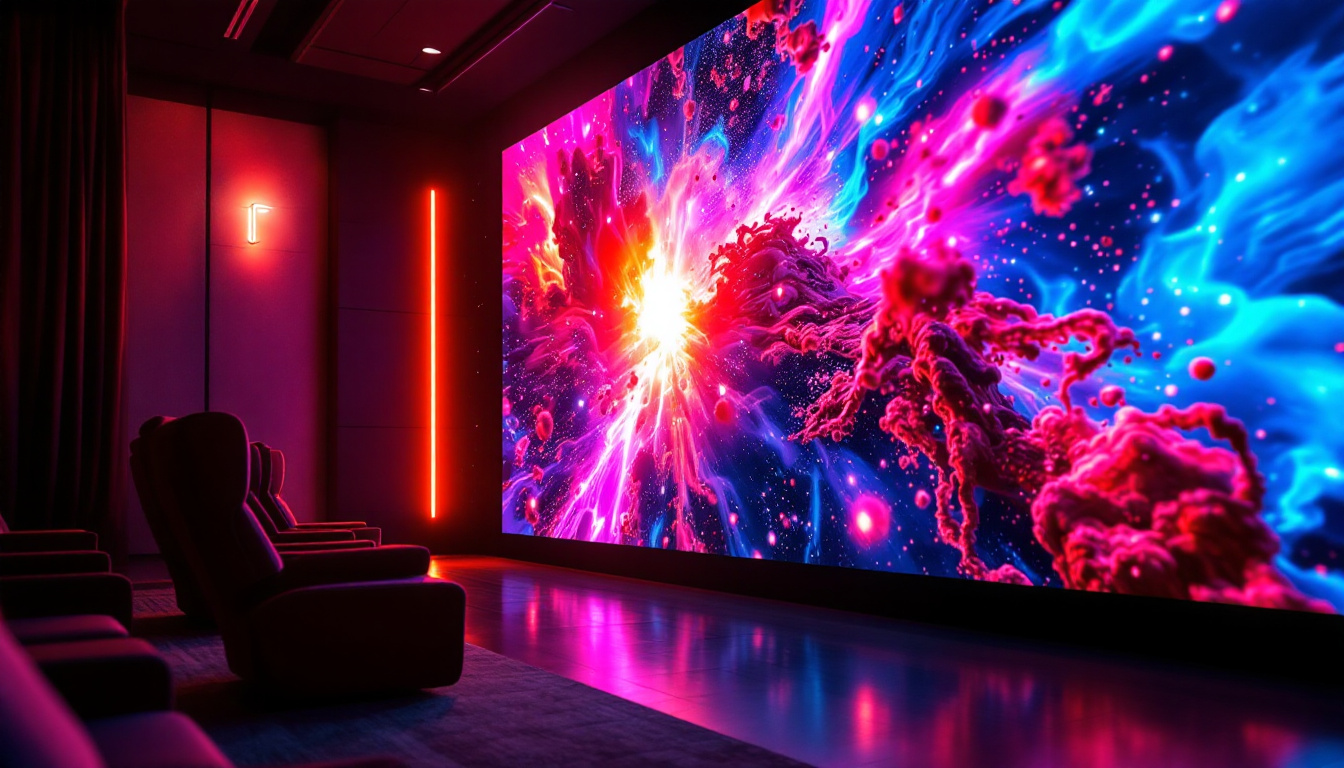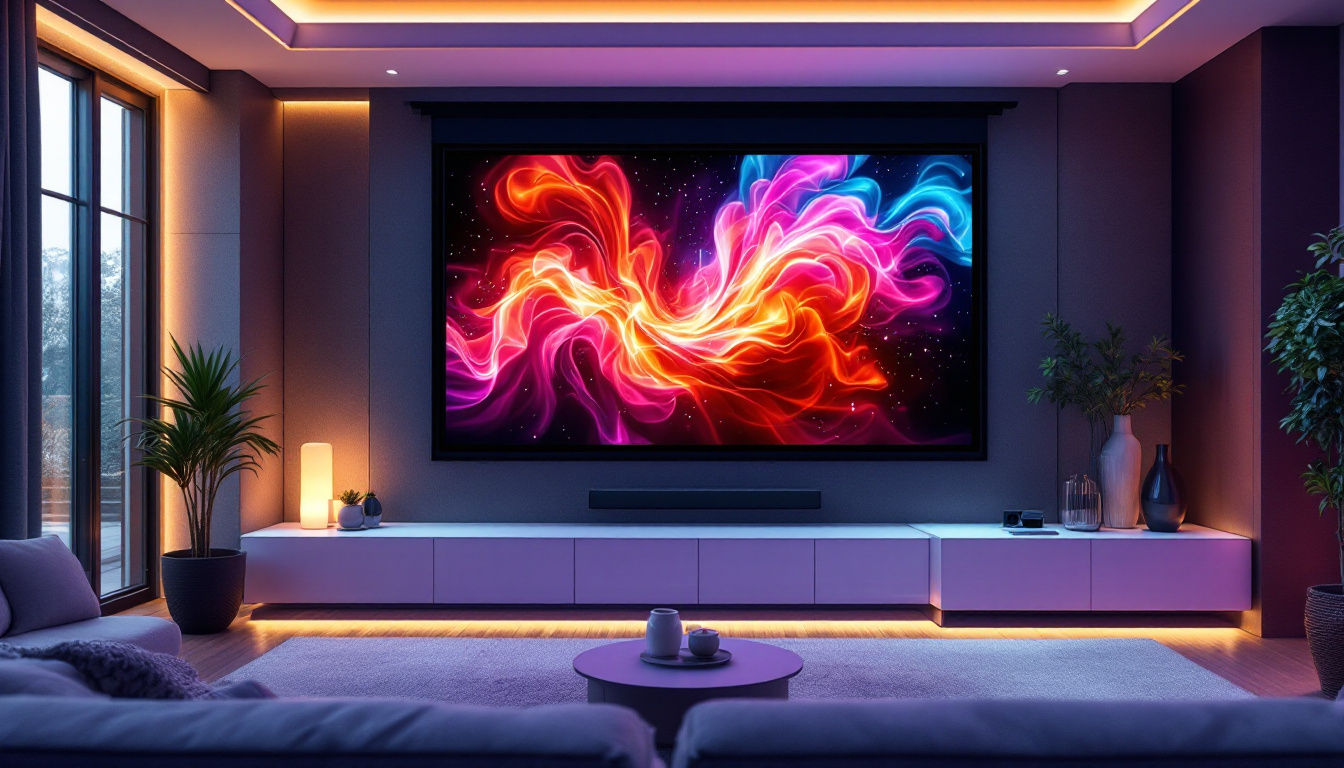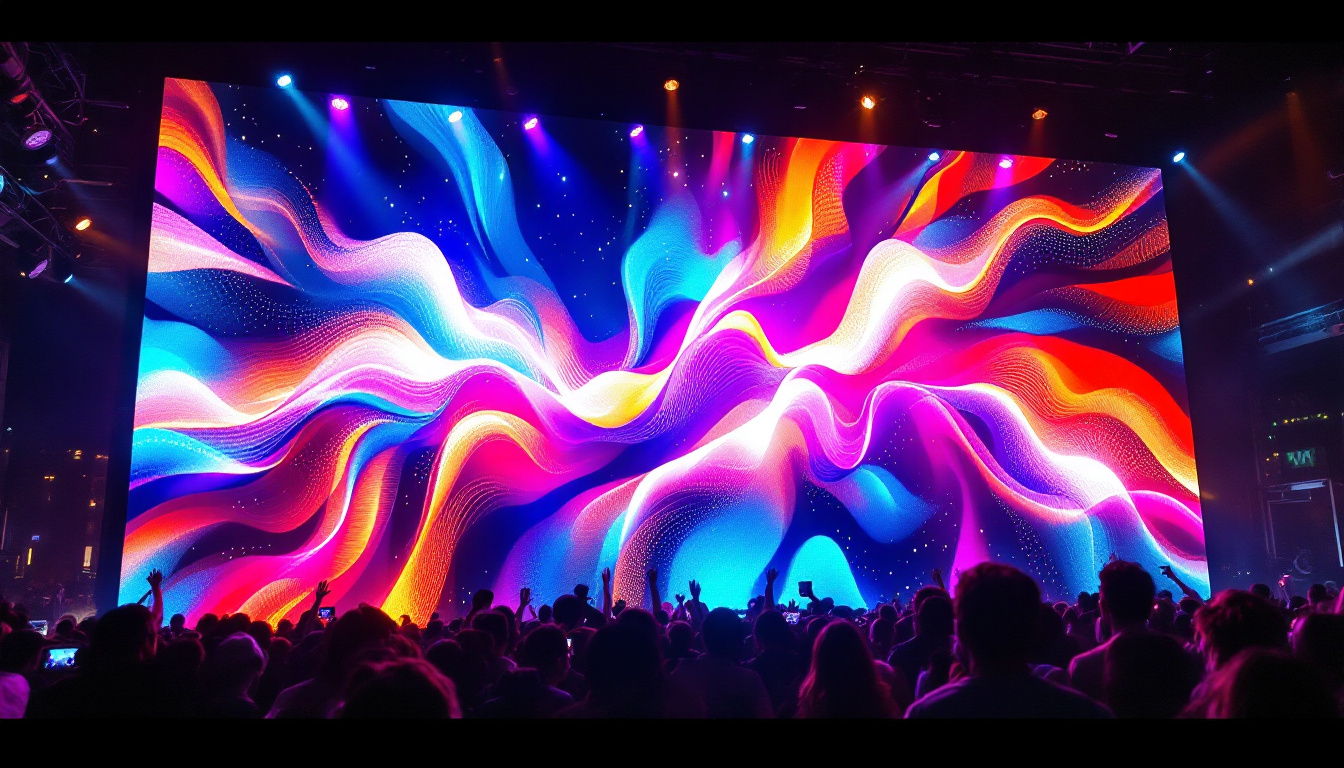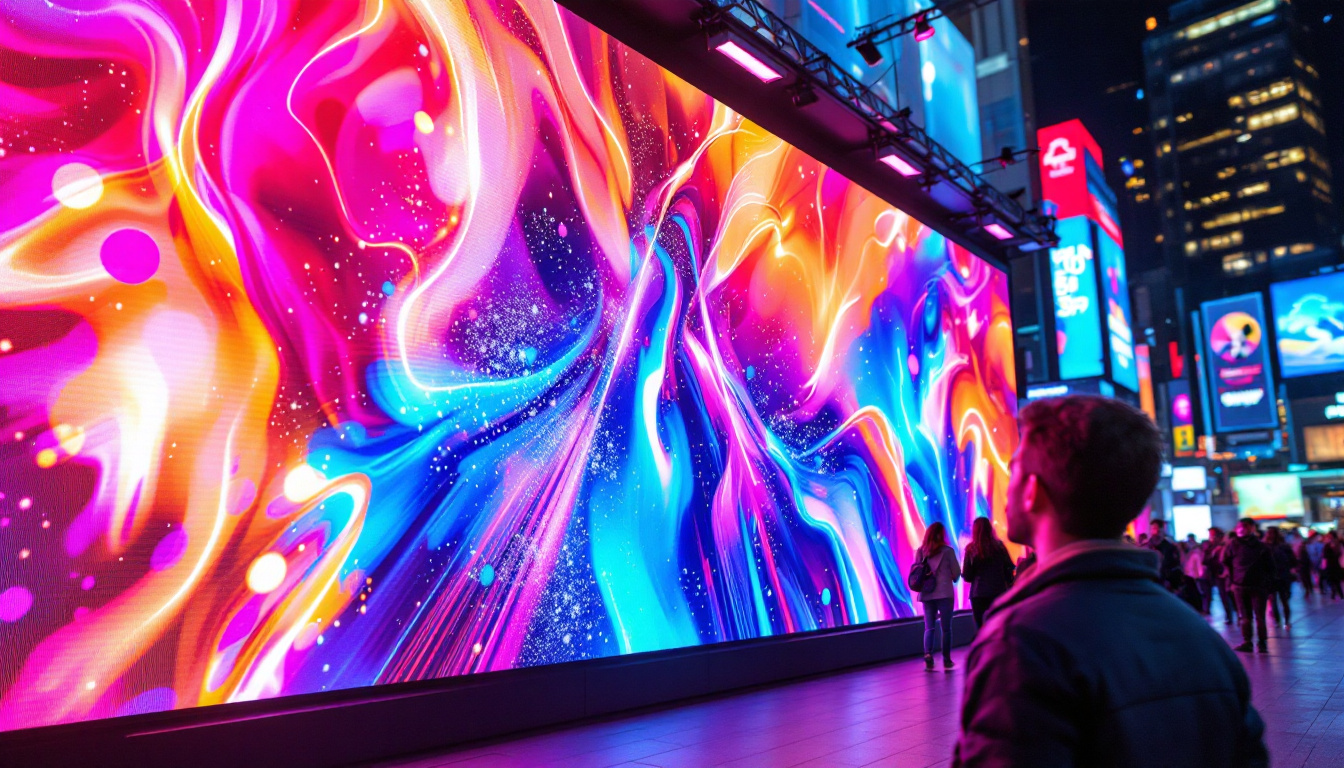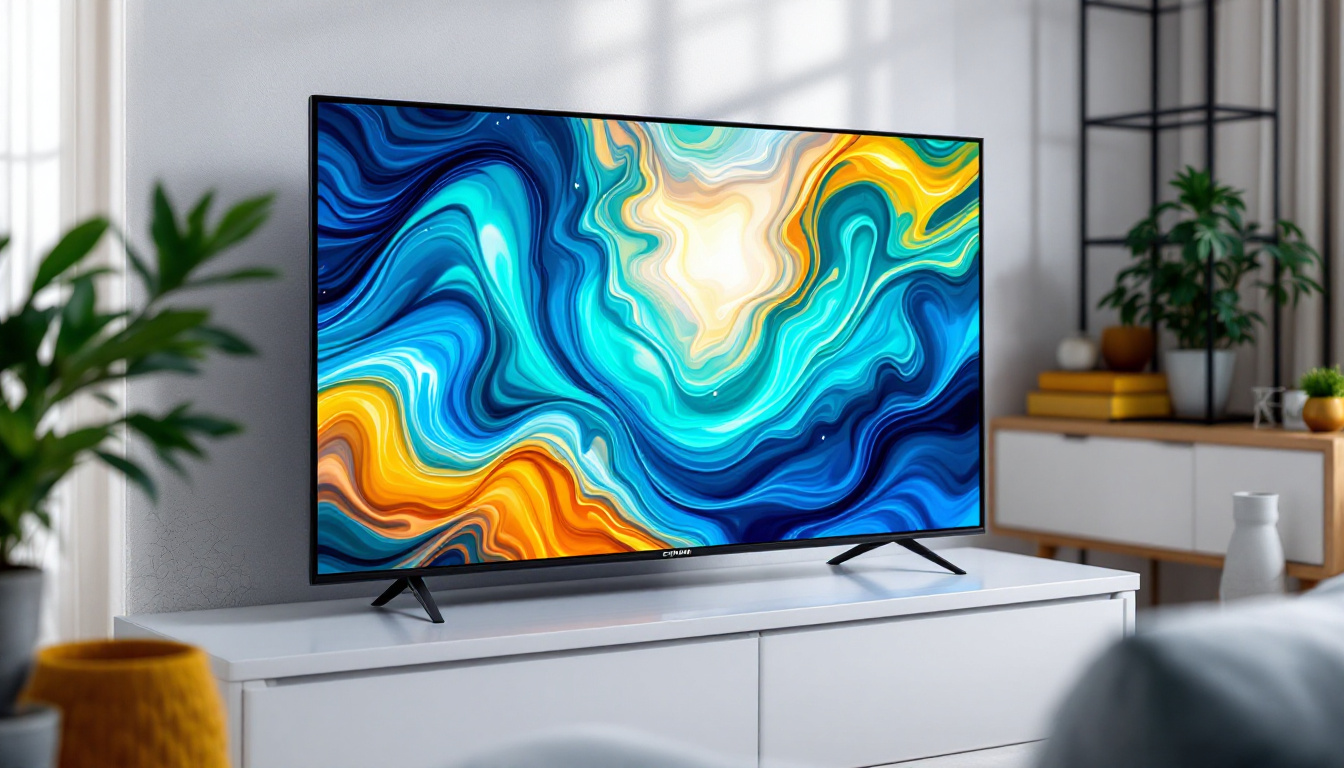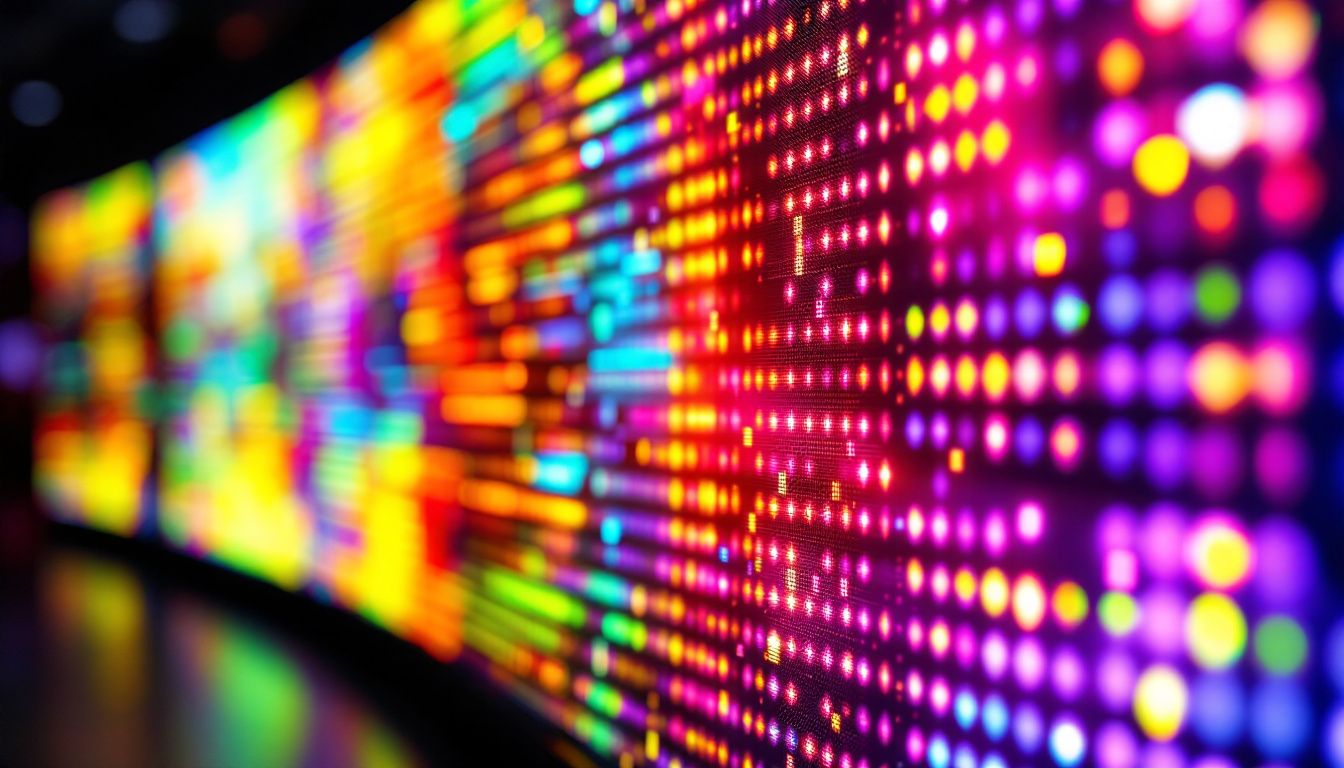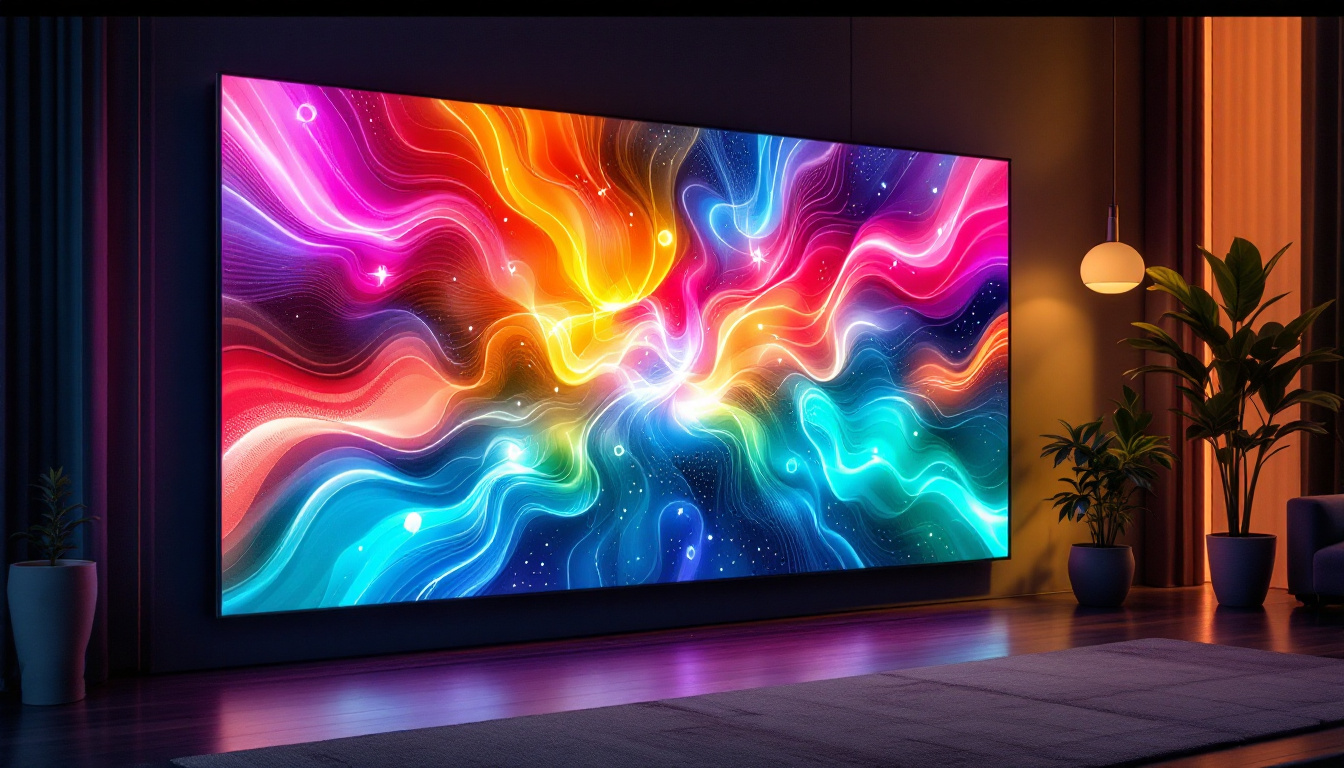In the world of modern television technology, LED displays have emerged as a leading choice for consumers seeking high-quality visuals. With their vibrant colors, deep contrasts, and remarkable clarity, LED televisions have transformed the way viewers experience their favorite shows, movies, and games. This article delves into the intricacies of LED display technology, exploring its benefits, types, and how it compares to other display technologies.
Understanding LED Display Technology
LED, or Light Emitting Diode, displays utilize an array of tiny diodes to produce images on screen. Unlike traditional LCD screens that use fluorescent backlighting, LED displays harness the power of these diodes to create brighter and more vivid images. This fundamental difference in technology leads to several advantages that make LED displays a popular choice among consumers.
How LED Displays Work
At the core of LED display technology is the use of diodes. These diodes emit light when an electric current passes through them, allowing for precise control over brightness and color. In an LED television, there are typically two main configurations: edge-lit and full-array. Edge-lit LED displays have diodes positioned along the edges of the screen, while full-array displays feature a grid of diodes behind the entire screen. The latter offers superior contrast and uniformity, as it can dim or brighten specific areas of the screen independently.
This capability to adjust brightness dynamically leads to deeper blacks and more vibrant colors, enhancing the overall viewing experience. Furthermore, LED displays can achieve higher brightness levels than traditional LCDs, making them ideal for viewing in well-lit environments.
Advantages of LED Displays
LED displays offer numerous advantages over older technologies, making them a preferred choice for many consumers. One of the most significant benefits is energy efficiency. LED technology consumes less power than traditional LCD and plasma screens, resulting in lower electricity bills and a reduced environmental footprint.
Additionally, LED displays are known for their longevity. With a lifespan that often exceeds 50,000 hours, consumers can enjoy their investment for years without the need for frequent replacements. The durability of LED technology also means that these displays are less prone to burn-in issues, a common problem with older plasma screens.
Types of LED Displays
While all LED displays share the same basic principles, there are several types that cater to different preferences and needs. Understanding these variations can help consumers make informed decisions when purchasing a new television.
Edge-Lit LED Displays
Edge-lit LED displays are among the most common types found in homes today. Their design allows for a thinner profile, making them an attractive option for wall mounting. The diodes are positioned along the edges of the screen, and light is spread across the display using a light guide panel.
While edge-lit displays are generally more affordable, they may not provide the same level of contrast and uniformity as full-array models. In darker scenes, viewers might notice a lack of depth, with some areas appearing brighter than others. However, for casual viewing and well-lit environments, edge-lit displays can still deliver a satisfying experience.
Full-Array LED Displays
Full-array LED displays feature a grid of diodes behind the entire screen, allowing for more precise control over brightness and contrast. This technology enables local dimming, where specific sections of the screen can be dimmed or brightened independently. As a result, full-array displays can produce deeper blacks and more vibrant colors, making them ideal for movie enthusiasts and gamers.
While full-array models tend to be more expensive than their edge-lit counterparts, the enhanced picture quality often justifies the investment. For those who prioritize visual fidelity, a full-array LED display is a worthwhile consideration.
OLED vs. LED: A Comparison
As consumers explore their options, they may encounter OLED (Organic Light Emitting Diode) technology, which has gained popularity in recent years. Unlike LED displays, OLED screens utilize organic compounds that emit light when an electric current is applied. This fundamental difference leads to some key distinctions between the two technologies.
One of the most notable advantages of OLED displays is their ability to achieve true blacks. Since each pixel emits its own light, OLED screens can turn off individual pixels completely, resulting in an infinite contrast ratio. This feature makes OLED displays particularly appealing for dark scenes in movies and video games.
However, OLED technology comes with its own set of challenges. Burn-in can occur if static images are displayed for extended periods, leading to permanent ghosting. Additionally, OLED displays can be more expensive than LED models, making them less accessible for budget-conscious consumers.
Choosing the Right LED Display
When selecting an LED display, several factors should be considered to ensure the best fit for individual needs and preferences. From screen size to resolution, understanding these elements can significantly enhance the viewing experience.
Screen Size
Screen size is one of the most critical factors when purchasing a new television. The ideal size depends on the viewing distance and the size of the room. A general guideline is to sit at a distance of 1.5 to 2.5 times the diagonal screen size for optimal viewing. For example, a 55-inch TV is best viewed from a distance of approximately 6.5 to 11.5 feet.
Additionally, larger screens can create a more immersive experience, particularly for watching movies or playing video games. However, it’s essential to balance size with available space to avoid overwhelming the room’s aesthetics.
Resolution and Picture Quality
Resolution plays a significant role in determining the picture quality of an LED display. The most common resolutions available today are Full HD (1080p), 4K Ultra HD (2160p), and 8K Ultra HD (4320p). While Full HD offers excellent clarity, 4K has become the standard for new televisions, providing four times the resolution of 1080p.
For those seeking the highest level of detail, 8K displays are now entering the market. However, content availability for 8K is still limited, making 4K a more practical choice for most consumers. It’s also important to consider features such as HDR (High Dynamic Range), which enhances color and contrast, leading to a more lifelike viewing experience.
Smart Features and Connectivity
Modern LED displays often come equipped with smart features that allow users to access streaming services, browse the internet, and connect with other devices. These features can significantly enhance the versatility of a television, making it a central hub for entertainment.
When evaluating smart features, consider the operating system and app availability. Popular platforms like Roku, Android TV, and Tizen offer a wide range of applications, ensuring access to favorite streaming services. Additionally, connectivity options such as HDMI ports, USB ports, and wireless capabilities are essential for connecting gaming consoles, Blu-ray players, and sound systems.
Maintaining Your LED Display
To ensure the longevity and optimal performance of an LED display, proper maintenance is crucial. Simple steps can help preserve picture quality and extend the lifespan of the television.
Regular Cleaning
Dust and fingerprints can accumulate on the screen over time, affecting picture quality. Regular cleaning is essential to maintain a clear display. Use a microfiber cloth to gently wipe the screen, avoiding harsh chemicals or abrasive materials that could damage the surface.
Additionally, keeping the surrounding area clean can prevent dust from settling on the television. Ensure that the vents are unobstructed to allow for proper airflow, as overheating can lead to performance issues.
Software Updates
Many modern LED displays come with built-in software that may require periodic updates. These updates can enhance performance, improve security, and add new features. Regularly check for updates through the television’s settings menu to ensure optimal functionality.
Staying updated also helps maintain compatibility with new streaming services and applications, ensuring that the television remains a valuable entertainment hub.
The Future of LED Display Technology
As technology continues to evolve, the future of LED displays looks promising. Innovations in display technology are constantly emerging, pushing the boundaries of what is possible in visual experiences.
MicroLED Technology
One of the most exciting developments on the horizon is MicroLED technology. This innovative approach utilizes microscopic LEDs to create individual pixels, offering the potential for even greater contrast, brightness, and color accuracy. MicroLED displays promise to combine the best features of both LED and OLED technologies, providing true blacks and vibrant colors without the risk of burn-in.
While MicroLED technology is still in its infancy, it has the potential to revolutionize the television market, offering consumers an unparalleled viewing experience.
Advancements in AI and Picture Processing
Artificial intelligence is also playing a significant role in the future of LED displays. AI-driven picture processing can enhance image quality by analyzing content in real-time and adjusting settings for optimal performance. This technology can improve upscaling, motion smoothing, and color accuracy, ensuring that viewers enjoy the best possible experience.
As these advancements continue to develop, consumers can look forward to even more impressive displays that cater to their evolving needs and preferences.
Conclusion
LED displays have transformed the landscape of television technology, offering consumers a remarkable viewing experience characterized by vibrant colors, deep contrasts, and exceptional clarity. With various types of LED displays available, understanding their differences can help consumers make informed decisions when purchasing a new television.
As technology continues to advance, the future of LED displays looks bright, with innovations such as MicroLED and AI-driven picture processing on the horizon. By staying informed and considering individual preferences, consumers can select the perfect LED display to enhance their entertainment experience for years to come.
Discover the Future of Visual Experience with LumenMatrix
Ready to elevate your viewing experience with the latest in LED display technology? LumenMatrix is at the forefront of innovation, offering a diverse range of LED display modules tailored to your unique needs. From immersive Indoor LED Wall Displays to dynamic Outdoor LED Wall Displays, and from versatile Vehicle LED Displays to sleek LED Poster Displays, our solutions are designed to captivate and engage. Whether you’re looking to enhance your brand’s visibility or create a mesmerizing visual experience, LumenMatrix has the cutting-edge technology to bring your vision to life. Don’t miss out on the opportunity to transform your visual communication. Check out LumenMatrix LED Display Solutions today and join the revolution in digital signage and display innovation.

